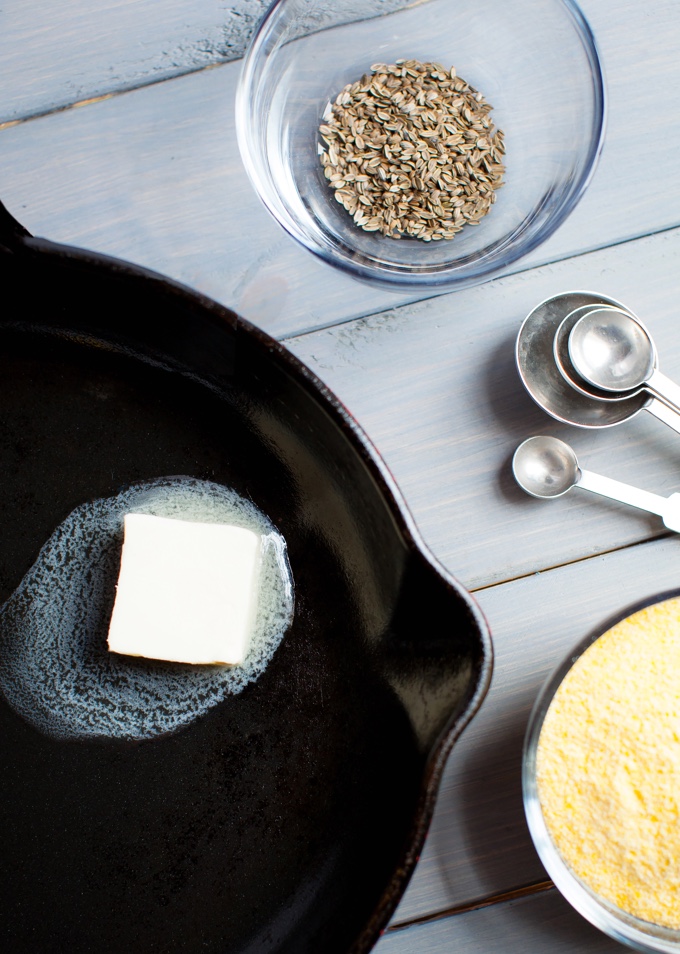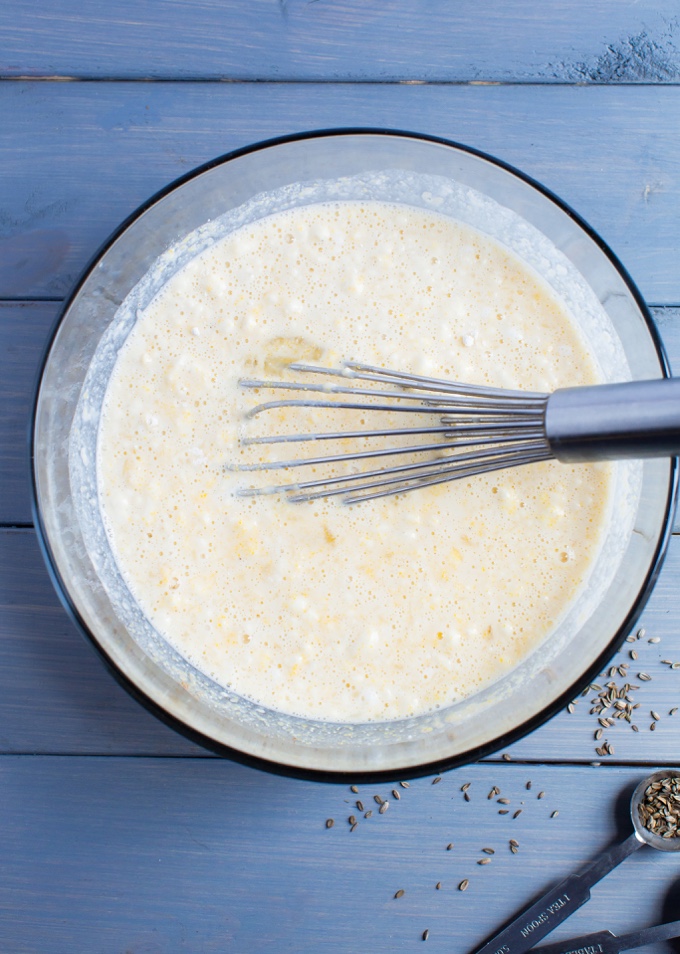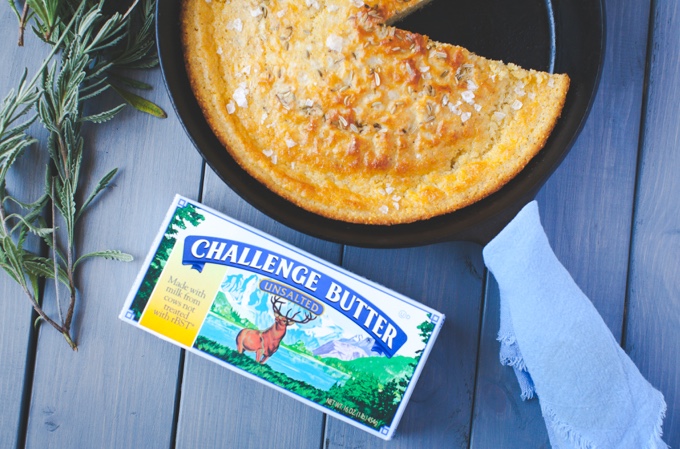Truly a heritage foodway, the origins of cornbread can be traced back to the days before Christopher Columbus landed on North American shores, so plentiful and significant was corn to the Native American people. Over time, the dish was customized to the tastes of both Southerners and Yankees, with denser, crumbier cornbread coming from the south and lighter, sweeter cornbread favored in the north.
Fortunately for those of us who enjoy the benefits of both southern and northern styles, we’ve developed a recipe for Fennel Seed Skillet Cornbread that’s endlessly adaptable and yields a tender, light, sweet and buttery crumb that’s an ideal canvas for spreads or the perfect accompaniment to any number of seasonal dishes.



Following a few basic guidelines will ensure your cornbread comes off just right:
- Use a cast-iron skillet. Cast iron has come into culinary fashion of late, but it’s been the vessel of choice for cornbread for centuries thanks to its even conduction and retention of heat. Melting butter into a 9-10-inch cast-iron skillet will guarantee a caramelized, crispy crust on your cornbread when it emerges from the oven. (Plus your cornbread will stay warmer longer after you transfer it from oven to table.)
- Leave the batter a little lumpy. Making cornbread does not call for dragging out the electric mixer. Instead, leave small-medium lumps of dry ingredients in your batter after a quick whisk, as those lumps will hydrate and steam under heat, leaving desirable nooks and crannies in your final cornbread.
- Add a little extra salt and spice. Once your lumpy batter has filled a pre-buttered cast-iron skillet, don’t pop it into the oven until you’ve sprinkled a few pinches of flaky kosher salt crystals―along with any other whole seeds or spices you want―over the top for boosted flavor and visual interest.
- Make sure it’s really done. No one wants underdone cornbread. To ensure yours is baked through after the prescribed bake time, puncture it in the center with a clean toothpick, sharp chef’s knife or cake tester. If it comes out clean (i.e. without any soft, clinging batter), it’s ready to serve. If not, pop it in the oven for another 3-5 minutes before testing again in another spot.


